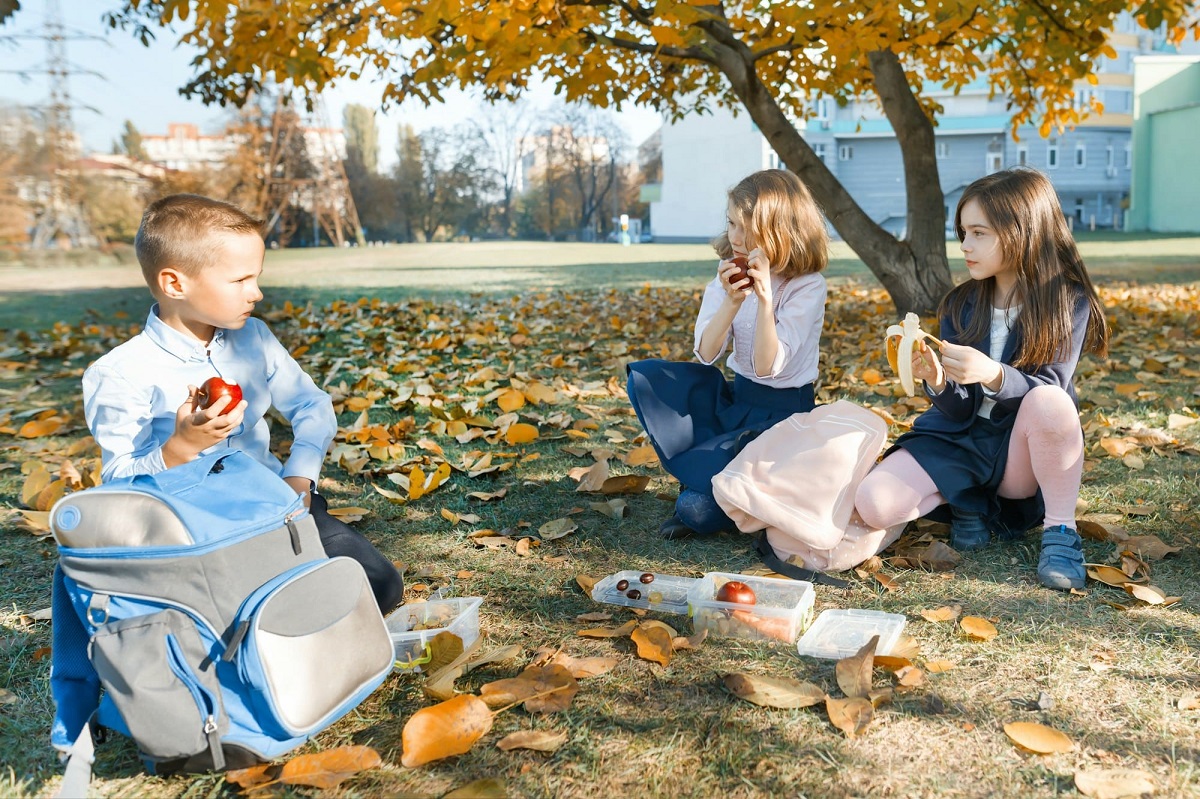Autumn Health Guide For Children (0-12 years): Boosting Immunity And Staying Active

Autumn Health Guide For Children: As the crisp air of autumn settles in, parents often worry about the health of their young children.
Autumn Health Guide For Children, Autumn, with its cooler temperatures and shorter days, marks the beginning of cold and flu season. Children, particularly those between the ages of 0 to 12 years, are more vulnerable to these seasonal illnesses due to their developing immune systems. In this article, we will discuss how to maintain your child‘s health during the autumn months, focusing on boosting immunity, staying active, and maintaining overall well-being.
Autumn Health Guide For Children (0-12 years)
1. Boosting Immunity With Nutrition

Autumn Health Guide For Children, One of the most effective ways to protect children during the autumn season is by strengthening their immune systems through proper nutrition.
Increase Vitamin C Intake: Citrus fruits like oranges, lemons, and clementine are packed with vitamin C, which is essential for boosting the immune system. Offering your child a variety of fruits and vegetables like bell peppers, strawberries, and kiwis can also help keep their vitamin C levels high.
Probiotic-rich Foods: A healthy gut can significantly boost a child’s immunity. Incorporate probiotic-rich foods such as yogurt and kefir into their diet to support gut health, which plays a role in immune defense.
Adequate Hydration: Children are often less inclined to drink water as the weather cools down. Ensure that your child stays hydrated, as water is vital for flushing toxins out of the body and supporting overall health.
Zinc For Defense: Zinc is another essential nutrient for fighting off colds. Foods like lean meats, nuts, and seeds can provide the necessary zinc for immune health.
2. Encouraging Physical Activity
Autumn Health Guide For Children, Children need to stay active to maintain their physical and mental health, even as the temperatures drop. Engaging them in autumn-appropriate activities can ensure they remain active without compromising their health.
Outdoor Play: Cooler weather doesn’t mean your child has to stay indoors. Encourage them to engage in outdoor activities such as walking, running, or riding a bicycle. The cool air can be invigorating, and being outdoors allows children to absorb vitamin D from sunlight, which is crucial for bone development and immune health.
Layering Up: While playing outside, ensure that your child is dressed in layers so they can stay warm while adjusting to the varying temperatures throughout the day. A hat, scarf, and gloves will keep them comfortable and prevent chills.
Indoor Activities: If the weather doesn’t permit outdoor play, consider indoor activities like yoga for kids, dancing, or setting up obstacle courses inside your home. Keeping them engaged and moving can prevent autumn lethargy and maintain their physical fitness.
3. Protecting Against Seasonal Illnesses

Autumn Health Guide For Children, Autumn is notorious for being the start of cold and flu season, so it’s essential to take proactive measures to safeguard your child’s health.
Hand Hygiene: Teach your child the importance of washing their hands thoroughly with soap and water, especially before eating, after playing, and after sneezing or coughing. Regular handwashing can significantly reduce the risk of catching and spreading germs.
Getting The Flu Vaccine: For children, particularly those who attend school or daycare, getting a flu vaccine is one of the most effective ways to prevent the flu. Consult with your pediatrician to determine the best time for your child to receive their flu shot.
Good Sleep Hygiene: Adequate sleep is crucial for a strong immune system. Ensure that your child is getting enough rest each night. Children aged 3-5 need 10-13 hours of sleep, while those aged 6-12 require 9-12 hours. A consistent bedtime routine helps improve sleep quality, which in turn helps their bodies fight off illnesses.
4. Managing Seasonal Allergies
Autumn Health Guide For Children, Autumn can also trigger seasonal allergies in children due to the presence of mold spores and ragweed pollen in the air. If your child suffers from allergies, you may notice symptoms such as sneezing, itchy eyes, and a runny nose.
Allergy-proof Your Home: Keep windows closed during high pollen times, typically in the early morning. Use air purifiers to remove allergens from the air and wash your child’s clothes and bedding frequently to remove pollen.
Limit Outdoor Time On High Pollen Days: Check pollen counts before allowing your child to spend extended time outdoors. If they must go outside, have them shower and change clothes afterward to remove allergens from their skin and hair.
Consult With A Pediatrician: If your child’s allergies are severe, consult with your pediatrician about appropriate antihistamines or other treatments to alleviate their symptoms.
5. Mental Health And Well-being

Autumn Health Guide For Children, Autumn’s shorter days can sometimes affect a child’s mood. While Seasonal Affective Disorder (SAD) is more common in adults, children can also experience changes in mood or energy during the fall. Ensuring that your child remains active, socially engaged, and receives enough sunlight can improve their overall mental health.
Maintain Routines: Keeping a regular daily routine helps children feel secure and stable, especially when transitioning into the autumn months. This includes consistent meal times, study schedules, and family activities.
Encourage Creativity: Autumn is an excellent time to encourage creative indoor activities, such as crafts, reading, or storytelling. These can stimulate your child’s mind and improve their mood during colder, shorter days.
Also Read:
Vitamin D And Sunshine: Why It’s Essential For Your Health, Especially In Autumn
Boosting Immunity For Autumn: Preparing Your Body For Cold And Flu Season
The Dangers Of Overusing Antibiotics
The Importance Of Gut Health In Maintaining A Strong Immune System




